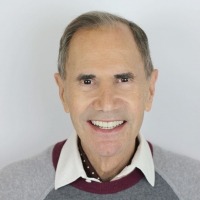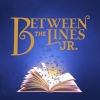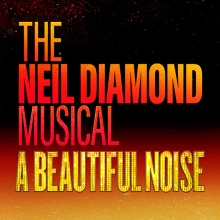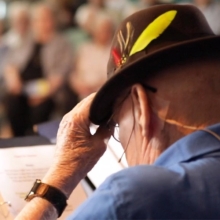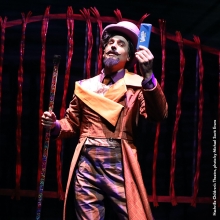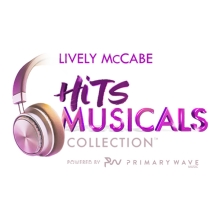Remembering Roger Englander, Celebrated Producer and Dear Friend of MTI
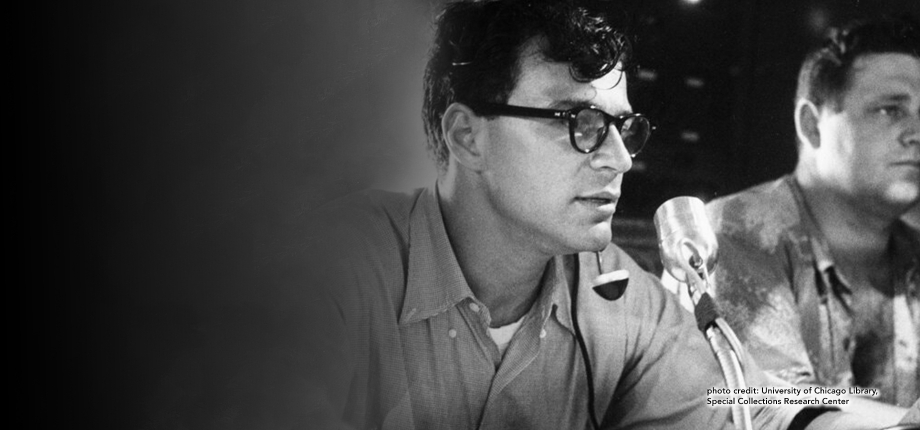
Remembering Roger Englander, Celebrated Producer and Dear Friend of MTI
Roger Englander, an Emmy Award-winning Producer and Director, passed away on February 8, 2021, at the age of 94. From 1958 to 1972, Mr. Englander changed television while producing and directing the immensely popular New York Philharmonic Young People's Concerts starring Leonard Bernstein - bringing classical music into the homes of millions across the globe.
Roger Englander also provided his insights, counsel, and expertise as the Educational Advisor to MTI for Broadway Junior® and Broadway Senior®, as well as directed in-depth conversation pieces memorializing MTI authors including Stephen Sondheim, James Lapine, John Kander, Fred Ebb, and more.
MTI Co-Chairman Freddie Gershon and his wife Myrna reflect on their decade's long friendship with Roger in this touching tribute below.
In Memoriam
Roger Englander
A long time ago, in the mid-1960s while attending a social gathering, I navigated the room looking for a familiar face but I didn't see one. I saw someone who seemed shy and was alone. I went over to this man and said, "Hi. What do you do?"
"Oh, a lot of things. Television, mostly." "What do you do?" I said I was a law student not thrilled with law school, but working on the law school show really gives me pleasure.
We began to talk about school shows, music, and writing parodies and "music". He was articulate and forthcoming. I learned later that when he had said "television mostly", it was his code of modesty. He was the producer/director/"co-conceptualizer" of The Young People's Concerts. That's how my friend, Roger Englander, and I met.
I was impressed, having grown up watching Leonard Bernstein and The Young People's Concerts. I learned that both Roger and young Bernstein were students of Serge Koussevitzky at Tanglewood in the 1940s. I told him I had attended the Juilliard School for eight years and we began to talk about music and conservatories and prodigies and rambled on about the arts.
He lived on St. Luke's Place, a small West village street of lovely Victorian townhouses.
Roger and Freddie became friends. I married Myrna. Roger, Freddie and Myrna turned into the three buddies group. We hung out together. We learned about each other's worlds (none of us ran out of anecdotes) and we were genuinely intrigued with each other and there was warmth and fondness, ongoing discovery and always, fun.
Myrna adored Roger (who had a mischievous, puckish giggle). We three bonded, opening up even more to each other. The warmth and mutual friendship and laughs kept escalating up until the end. This is the end. Roger, you left us… but your essence, your stories, your adventuresome curiosity, your vast, diverse knowledge, and your joie de vivre are still very much with us.
Roger hailed from Cleveland and was loyal to his midwestern roots. He was asked early in his career to do something special for and with the University of Chicago (Roger was a whiz kid, accepted to that university at age 16). For a university lecture after a Lenny/Roger/Benjamin Britten PETER GRIMES project), Roger invited Lenny to be a guest speaker at the University of Chicago.
This event (as he relayed it to us) redefined Roger's life and changed television. Of course, he thought he knew Lenny well, but he had never seen him in a classroom context... he had never seen anyone address students the way Leonard Bernstein did. Roger's epiphany was seeing Lenny's "cinematic, charismatic personality" as a teacher which was a revelation. "He was an animated magnet, pulling students into new worlds." This was beyond Lenny's already known gifts of musicianship. He was also a consummate teacher who delivered, with "Lenny gusto". On that day, with the Lenny style of teaching, insinuating information into dazzled students mesmerized by Lenny's unique ability to seduce them into the subject at hand, with Lenny using his "Elmer Gantry-esque booming voice" while gesticulating and pacing, "that moment, that class, that day" Roger said that was the beginning." He continued, saying "Lenny taught as though every student in every seat was smart, mature, cared about the subject and he never talked down to the class. "Oh, yes, that was the beginning!"
Roger, I said, "The beginning of what?" "Everything, of course!" That experience crystallized the embryo of what would one day be our great collaboration - The Young People's Concerts. He was a visual teacher, he was a visual conductor, he knew his stuff and he communicated like no one else with knowledge and gave a performance." The camera will love him and if the camera loved him, so would the world; so would the television audience." Prescient Roger saw Lenny in a way, perhaps, new and different than Lenny ever saw himself.
Years later, I was thinking "What made Roger different from everyone else?" I recalled that conversation we had and asked "How do you visualize music events when there is no Leonard Bernstein? How do you conceive a video style to keep an audience's attention? And, if there's a story, how do you tell the story on a tiny screen and not distract from the action, tension and mood and the music?" He replied that he did not know for sure when it started, or how it started, but that the only way he was able to take what he had learned about the evolving technology of television was to always remember that the people performing the music or singing the opera performing the show or conducting an orchestra or the soloist on an instrument were never taught, never prepared for the invasion of cameras, lights, the distraction of other people operating cameras and moving about. His job was twofold: to make the audience at home feel that they were there, and that it was all-natural, watching a concert, an orchestra, an opera or ballet, without thinking about TV techniques, the intercutting of the camerawork, the choice of lenses and the meticulous preparation of Lenny's scripts or Roger's scripts - sometimes written, sometimes in their heads - all of the camera angles and a cinematic sensibility he felt was needed to bring out the totality of the event but never have a single camera just look at a single conductor with an orchestra from one or two or three angles. But, to do this, he must actually choreograph, block a stage plan and design for each specific performance of opera, theater, orchestra or a ballet or for that great virtuoso and always understand the problems of the performers. Example: the difference between a solo and an adagio in ballet, viz.: the magic and intimate chemistry of two people dancing. He had to make that feel intimate and romantic on a small screen, even though he knew they were not intimate and there were years of exercise, practice, stretching, injuries and pain that went into preparing for those performances. The audience must only see, feel, be drawn to the magic of the finished event.
It's easier for the "live" audience that's sitting in their seats in the actual performance space… but when watching from your home, stage to seat distance is removed, and you may see the sweat on brows or a tinge of strain in their eyes or clenched teeth or a male dancer slowly, elegantly lowering his partner onto her toe shoe, but a bit too far, even a fraction of an inch, and there's an itsy, bitsy tap and she feels it, she still smiles and looks adoringly at her partner. To the live theater audience watching that moment, it seemed like gossamer... but if the camera reveals too much, you can break the magic spell of the two dancers.
He studied each art form and educated himself to be prepared for each task. He cared. He had to learn everything about what was going to be televised and educate himself before he could conceive an invisible way to create the illusion of no one feeling the intrusion of TV technology. He said, "It's a sort of trompe-l'oeil. I am not changing anything but when these ballets were created, when this music was written, when the sets were designed, they were not thinking about cameras." I am helping to keep the arts alive. I do not have the luxury of repeating sequences like they have in musical motion pictures, with sets, massive sound stages and huge cranes looking down from above, I have television cameras and they were usually not in a TV studio and those cameras were difficult to move. They were big and cumbersome. Roger had no option to yell out: "Let's try it again! Take 12!" He sent me a copy of a letter he wrote to the National Endowment of the Arts in 1971 after a heated meeting of the Board and its advisors and, in vigorously advocating his position and to explain his passion, he wrote, "I get on my soapbox like this, not because I am in television, but to show why I am in television."
The technology of today has advanced. The TV cameras are tiny, where they can quietly, unobtrusively move in and about a stage on tiny cranes or even wires. The lighting is different and requirements are different but for Roger's time at the inception of television, every TV "event" was an obstacle course of challenges that he had to bridge. He continued to observe so he could understand what was going on behind the scenes. He was kind, soft-spoken and trusted. He had the wonderful, natural attributes of likeability and trustability without any pretension. He got the job done without allowing himself to be intrusive.
And he had generosity of spirit: In the 1980s, I wrote a book. The publisher asked me to do a promotional tour across the United States. There would be television chat shows, print interviews, more television, a rush to an airport and go on to the next city. I told Roger and asked, "How do I prepare to be on TV?" He said, "I will give you E-Z to learn, TV tips. Shortly thereafter, I had a master class with Roger Englander.
"Never look at the camera and always look at the interviewer. Always be engaging. Be attentive, look pensive, shocked, be animated, surprise them, laugh. Remember to repeat the name of your book over and over again. Never, ever refer to it as "the book" or "my book". We did trial and error with cameras rolling for hours and playbacks. When we finished, he gave me a little gift, a zipper pouch. Inside was a micro-mini make-up kit. He said, "Never forget the Kennedy-Nixon Debates. You must wear color as well as cover your facial stubble. You must never expect studios to have make-up for you. Do not be self-conscious or embarrassed. This adds to your TV trustworthiness and your believability. "Freddie, no matter what you are doing, no matter how good or bad your book may actually be, this is still show biz and you are on television. The camera will move around you. The cameraman will know what shots to make because the director will be calling the shots to him. Ignore everything and everyone except focus on the host/the interviewer and remember, "When you sell yourself, you sell the book!"
I ended up doing two 28 city national tours. TV sold the book. (Definitely not the quality of my writing!) Oprah, Larry King, Dr. Ruth, the Today Show… Oh, I had fun and it worked and it was gratifying. Roger was happy. He asked for a reel of my work. We giggled and laughed… and celebrated. We hugged.
Roger and the Young People's Concerts was a teaching theme repeated in his diverse career where children's television, education and the arts reflected his passion. Nothing was unimportant if it spread the word. He became my "who can I talk to" guidance counselor for the early development of Broadway Junior as well as Broadway Senior. He got it. (Most others could not envision what I was talking about.)
With Roger, never grandiosity, always patience with the understated and modest Roger, filled with deep-rooted knowledge and passion for whatever he was doing, whenever he was doing it and committed to doing it. He was not frightened or intimidated by Vladimir Horowitz. He felt privileged. He said, "Imagine turning down a chance to work with Paganini! That's how I felt in the presence of Horowitz! And he's good fun. We laugh, no matter how strange his requests (and they are at times)". For Vladimir Horowitz's concert on TV for the first time, from Carnegie Hall, we worked in tandem to succeed. Outbursts by the genius were mostly in pursuit of perfection - and perhaps some nerves and anxiety. "Horowitz delivered the goods" and he was keenly aware he was on television.
So if you've never heard of Roger Englander, if you never knew Roger Englander, if you think that perhaps the Gershons are over the top in what we have to say about Roger Englander, just imagine the concert halls of the world, built since Carnegie's Young People's Concerts and even those old grand dames built long before, built prior to the "Roger Englander - Peephole". If they still give tours of Carnegie Hall, don't be afraid to ask to go backstage. Look for the brass plaque next to the little peephole which changed music from being an audio experience to being an audio/visual experience when it came to teaching and riveting a home audience in front of small television screens with small speakers more than 60 years ago! Then watch some of the DVDs of the concerts and see Lenny's magic show and imagine how the difficult puzzle of art and technology came together.
Thank you, Roger... Thank you for what you accomplished in your long life, thank you for what it was like for us to have you as a friend, a buddy and an inspiration, a teacher, a raconteur. Find new projects, old friend - be at peace but don't "rest". Keep being you, wherever you are. You'll find something new to do and do it in a new way; an exciting way.
Your loving friends,
Myrna & Freddie Gershon
- Roger Englander: Accomplishments and Accolades
-
15+ years as producer/director of the NY Philharmonic's Young People's Concerts/Vladimir Horowitz at Carnegie Hall/The Sol Hurok Presents Series/The Bell Telephone Hour/ Omnibus/NBC Opera/The Great American Dream Machine/Camera Three/The Little Orchestra Society/Andre Kostelanetz/Jose Limon/Richard Rodgers/The Peabody Award/5 Emmy Awards/Director's Guild of America Award/The Prague International Festival Award/The Prix Jeunesse of Munich/The Thomas Alva Edison Award/The Sylvania Award/The TV Guide Editor's Award/ The Billboard Award/Co-Chairman of Advisory Panel for the National Endowment for the Arts/Consultant for the NYS Council on the Arts/Consultant for Education and Broadcasting Corporation/Trustee of the National Academy of Arts and Sciences/Director of International Council for Television/Delegate to Musical Theater Conferences for UNESCO at the Hague, Vienna and Warsaw/Member of the Executive Committee Internationales for Music in Vienna/Member of the Conseil Internationale de la Musique in Paris/Instructor at the Institute of Film and Television, School of the Arts, NYU for seven years and lecturer and conductor of seminars at 35 separate Universities and Colleges in the U.S.A./The Stage Director of the NYC Opera Company's production of CARMEN, AMAL AND THE NIGHT VISITORS and more/The Stage Director of the Newport Music Festival in RI for PORTRAIT OF MANON, THE PATRIOT and CAVALCADE OF MUSICAL THEATER/Stage Director of the American Opera Company in Philadelphia for THE BATTERED BRIDE and THE MARRIAGE OF FIGARO/Stage Director of the University of Chicago for CAVALLERIA RUSTICANA and three other operas/Assistant to Artistic Director of the Chicago Opera for 16 operas including CARMEN, AIDA, RIGOLETTO, LA BOHEME, MADAME BUTTERFLY/Producer/Stage Director for the NY Philharmonic's Promenade Concerts/Producer at Lincoln Center, NYC of CANDIDE with Allan Arkin and Madeline Kahn, LADY IN THE DARK with Angela Lansbury, MUSICAL THEATER OF GERSHWIN with Barbara Cook and Gary Moore/Producer Director for the White House State Dinners/33 separate television events involving opera or musical theater/Consultant and Co-Conceptualizer with the Dean of the School of the Arts of NYU and the Tisch School to create, design and plan a graduate program inaugurating a Department of Musical Theater for composers, lyricists and playwrights, the first of its kind for experimental learning of collaboration/Educational Advisor to Music Theatre International for both Broadway Junior and Broadway Senior/Director of a series of conversation pieces memorializing the thoughts of creators of musical theater works including Stephen Sondheim, James Lapine, John Weidman, Michael Feinstein on the Gershwins, Jerry Bock, Sheldon Harnick and Joe Masteroff (on SHE LOVES ME) and Richard Adler with George Abbott on Life in the Theater in the 50's as compared to contemporary musical theater and as a "lifetime writing team", David Shire and Richard Maltby and Messrs. Fred Ebb and John Kander performing together their revue as part of a conversation piece on AND THE WORLD GOES ROUND (with Susan Stroman, Scott Ellis and Tommy Thompson). Roger also produced musical entertainment for four U.S. Presidents at the White House.
